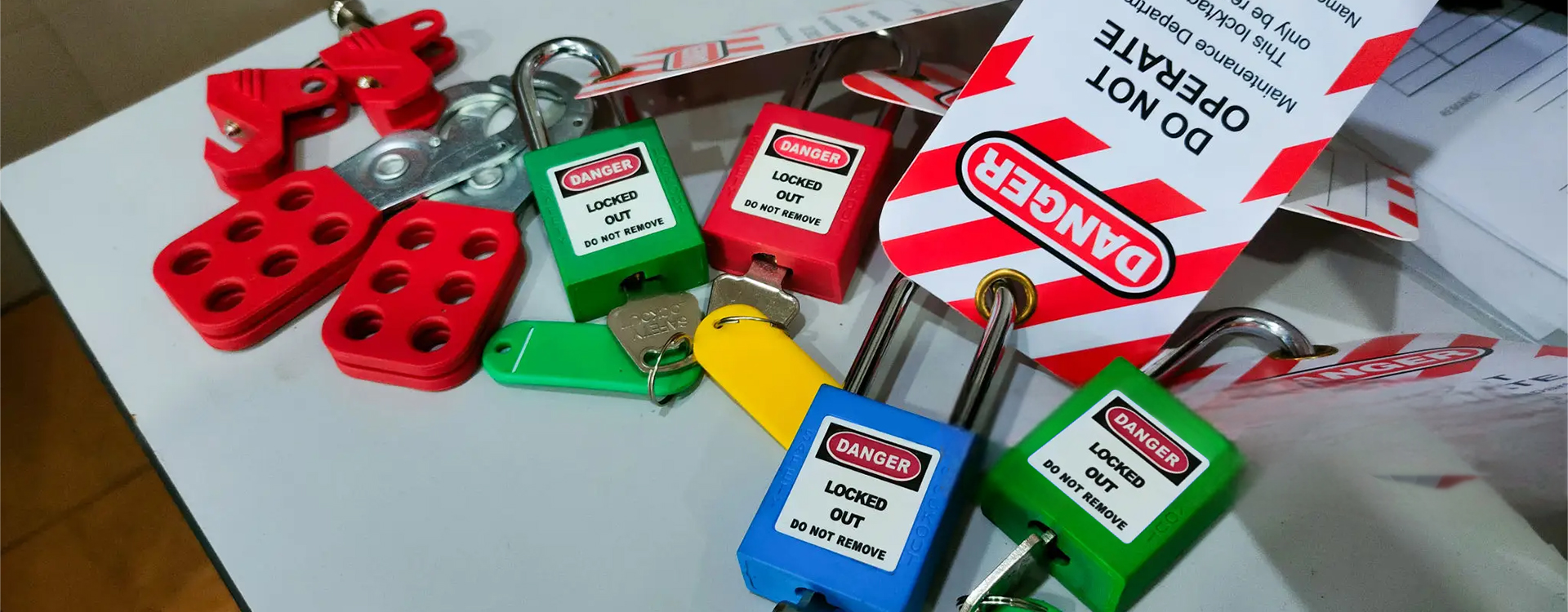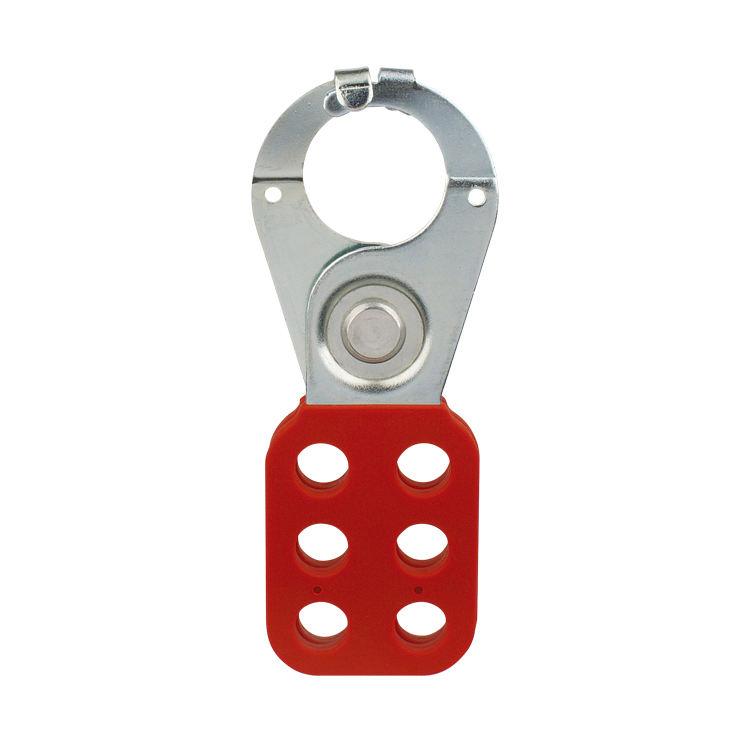Lockout Tagout In Automobile Industry
Lockout Tagout (LOTO) Solutions for the Automobile Industry

Core Elements of a Lockout Solution
-
Energy Source Identification
>Padlocks
Systematic identification of all hazardous energy sources (electrical, mechanical, hydraulic, pneumatic, thermal, etc.) in equipment/machinery.
Valve Lockouts
Circuit Breaker Lockouts
Circuit Breaker Lockouts
Plug and Electrical Lockouts
Pneumatic and Hydraulic Lockouts
Cable Lockouts
-
Energy Isolation Procedures
>Padlocks
SDetailed, written steps to isolate energy using approved lockout devices (e.g., circuit breakers, valves, disconnect switches).
Valve Lockouts
Circuit Breaker Lockouts
Circuit Breaker Lockouts
Plug and Electrical Lockouts
Pneumatic and Hydraulic Lockouts
Cable Lockouts
-
Lockout Devices & Tags
>Padlocks
Physical locks (individual/group locks, hasps) and standardized warning tags to prevent unauthorized energy reconnection. Tags must indicate the user’s name, date, and "Do Not Operate" notice.
Valve Lockouts
Circuit Breaker Lockouts
Circuit Breaker Lockouts
Plug and Electrical Lockouts
Pneumatic and Hydraulic Lockouts
Cable Lockouts
-
Employee Training
>Padlocks
Training for authorized workers (who perform lockout) and affected workers (who interact with locked-out equipment) on procedures, risks, and device use.
Valve Lockouts
Circuit Breaker Lockouts
Circuit Breaker Lockouts
Plug and Electrical Lockouts
Pneumatic and Hydraulic Lockouts
Cable Lockouts
-
Verification & Testing
>Padlocks
Post-isolation checks to confirm energy is fully de-energized/isolated (e.g., attempting to start equipment to verify lockout effectiveness).
Valve Lockouts
Circuit Breaker Lockouts
Circuit Breaker Lockouts
Plug and Electrical Lockouts
Pneumatic and Hydraulic Lockouts
Cable Lockouts
Steps for Implementing a Lockout Solution (LOTO Procedure)
-

Preparation
Identify all energy sources connected to the machinery or system that requires servicing.
-

Shutdown
Power down the equipment following the proper shutdown procedure for the specific machine or system.
-

Isolation
Physically isolate the machine or equipment from all its energy sources (electrical, mechanical, hydraulic, etc.) using the appropriate lockout devices (e.g., padlocks, valve lockouts).
-

Lockout
Apply lockout devices to all energy-isolating points. Each worker involved in the maintenance should apply their own lock, ensuring multiple levels of protection.
-

Tagout
Attach tags to all locked-out devices, providing clear information about who is responsible for the lockout and the purpose.
-

Release Stored Energy
Safely release any stored energy (e.g., hydraulic pressure, residual electrical energy) in the system to prevent accidental activation.
-

Verification
Verify that the lockout was successful by attempting to operate the machine’s controls to ensure it cannot be energized.
-

Maintenance/Servicing
Perform the required maintenance or servicing while ensuring the lockout remains in place.
-

Re-energizing the Equipment
After the work is completed, verify that all tools and workers are clear from the area. Remove locks in reverse order, with each worker removing their lock only when their part of the work is complete.
-

Restart
Restore energy to the equipment and test it to ensure proper functionality.
CUSTOMER CASES
CUSTOMER REVIEWS
What travelers community are saying.

A***e
⭐ ⭐ ⭐ ⭐ ⭐
I really enjoyed interacting with the supplier. Everything went smoothly and professionally. The products were dispatched and received on time and the quality is impeccable. I would recommend this supplier as they are truly professional and friendly. I didn't experience any problem and I appreciate this smooth transaction.

U***e
⭐ ⭐ ⭐ ⭐ ⭐
Good Quality products. I will order from them again. Good customer service.

J***o
⭐ ⭐ ⭐ ⭐ ⭐
The products they make are of great quality, the customer service is excellent, and everyone is very professional.

K***y
⭐ ⭐ ⭐ ⭐ ⭐
conforme à ma description. je suis très satisfait et recommande vos produits et services


Lockout Solution FAQ
-
What is Lockout/Tagout (LOTO)?
-LOTO is a safety procedure used to ensure that machines and equipment are properly shut off and cannot be restarted during maintenance or servicing. It involves locking the energy source and tagging it with a warning label.
-
Why is LOTO important in the automobile industry?
+Automobile manufacturing involves high-risk equipment like robotics, welding machines, hydraulic presses, and conveyor systems. LOTO prevents accidental startup of this equipment during servicing, reducing the risk of injury or fatality.
-
Which types of energy must be controlled in auto plants?
+Electrical energy (e.g., robots, welding lines)
Hydraulic energy (e.g., presses)
Pneumatic energy (e.g., painting tools, lifts)
Mechanical energy (e.g., moving parts under tension)
Thermal and chemical energy (e.g., battery assembly, coating systems) -
What are the most commonly used LOTO devices in auto factories?
+Circuit breaker lockouts
Valve lockouts (ball/gate)
Plug and cable lockouts
Push-button and emergency stop lockouts
Group lock boxes for multi-worker maintenance
Color-coded padlocks and tags by team/department -
When is Lockout/Tagout required?
+LOTO is required before performing any servicing, maintenance, inspection, or repair where:
Employees may be exposed to hazardous energy
Unexpected machine startup could occur
Safety guards are removed or bypassed -
Who is responsible for performing LOTO?
+Only authorized employees who are trained in lockout/tagout procedures should apply or remove LOTO devices. Affected employees (e.g. machine operators) must be informed but do not perform LOTO themselves.
-
What are the OSHA requirements for LOTO in manufacturing?
+Under OSHA standard 29 CFR 1910.147, employers must:
Develop a written LOTO program
Train all affected and authorized employees
Provide appropriate LOTO devices
Conduct annual audits of procedures and practices













